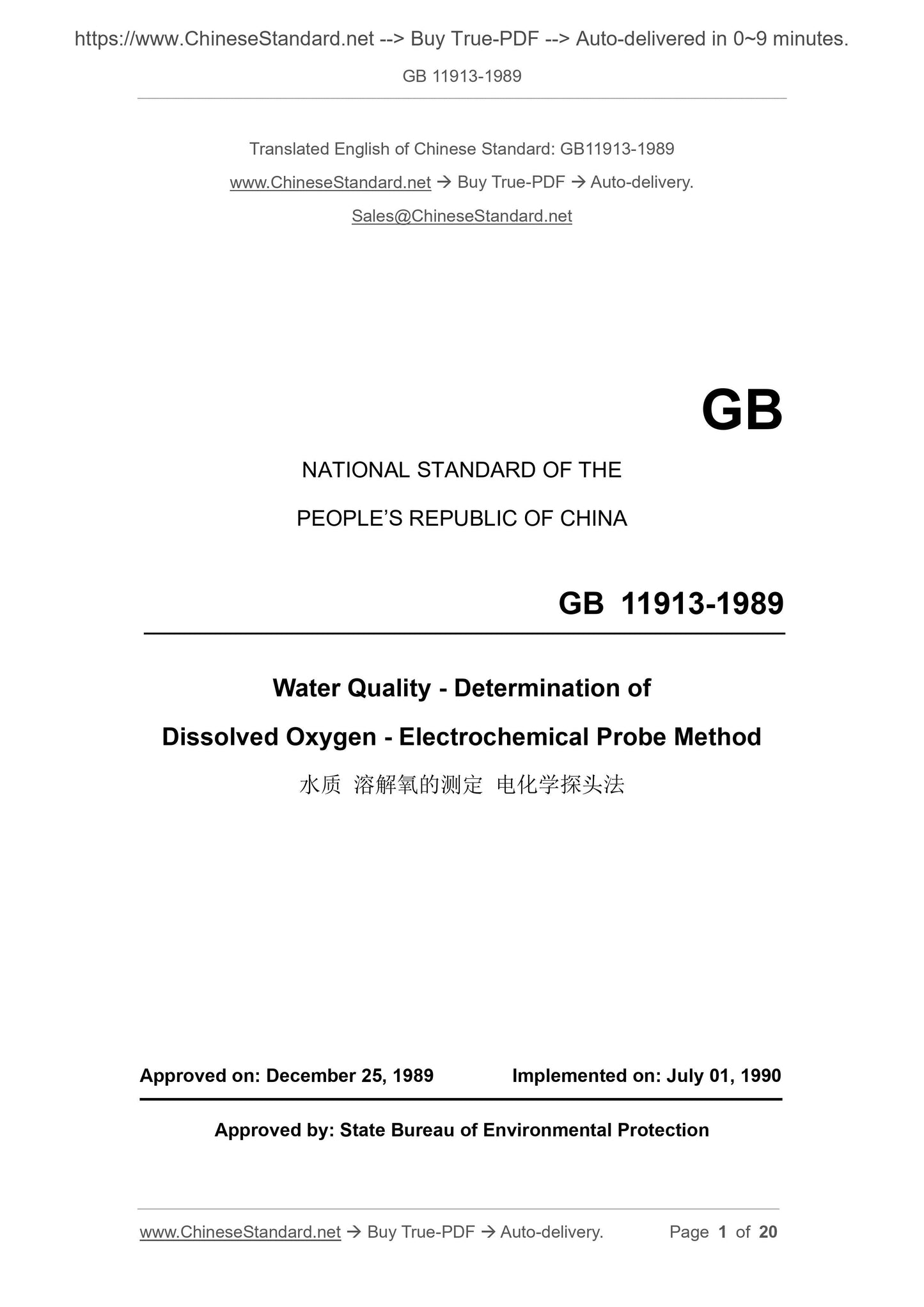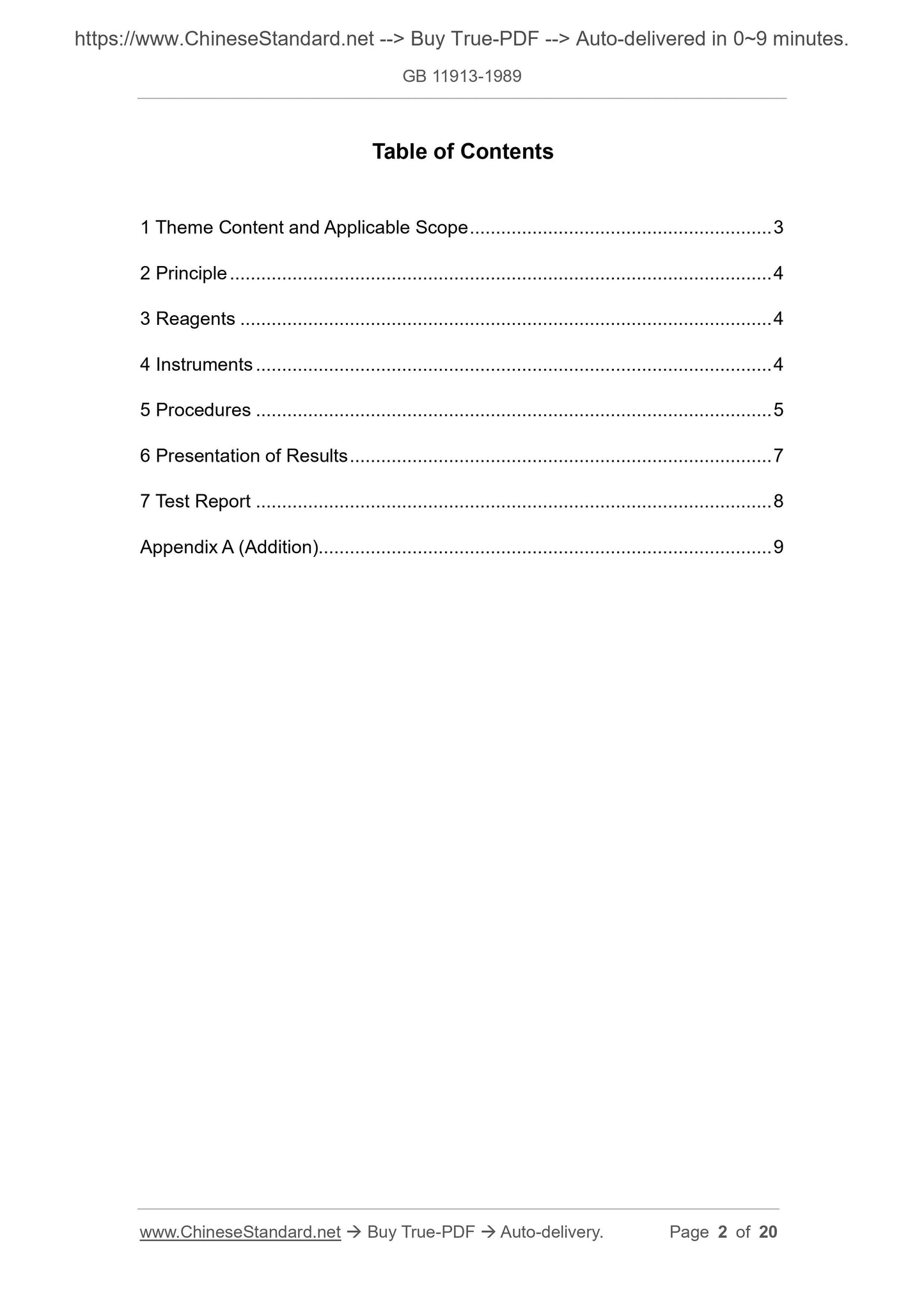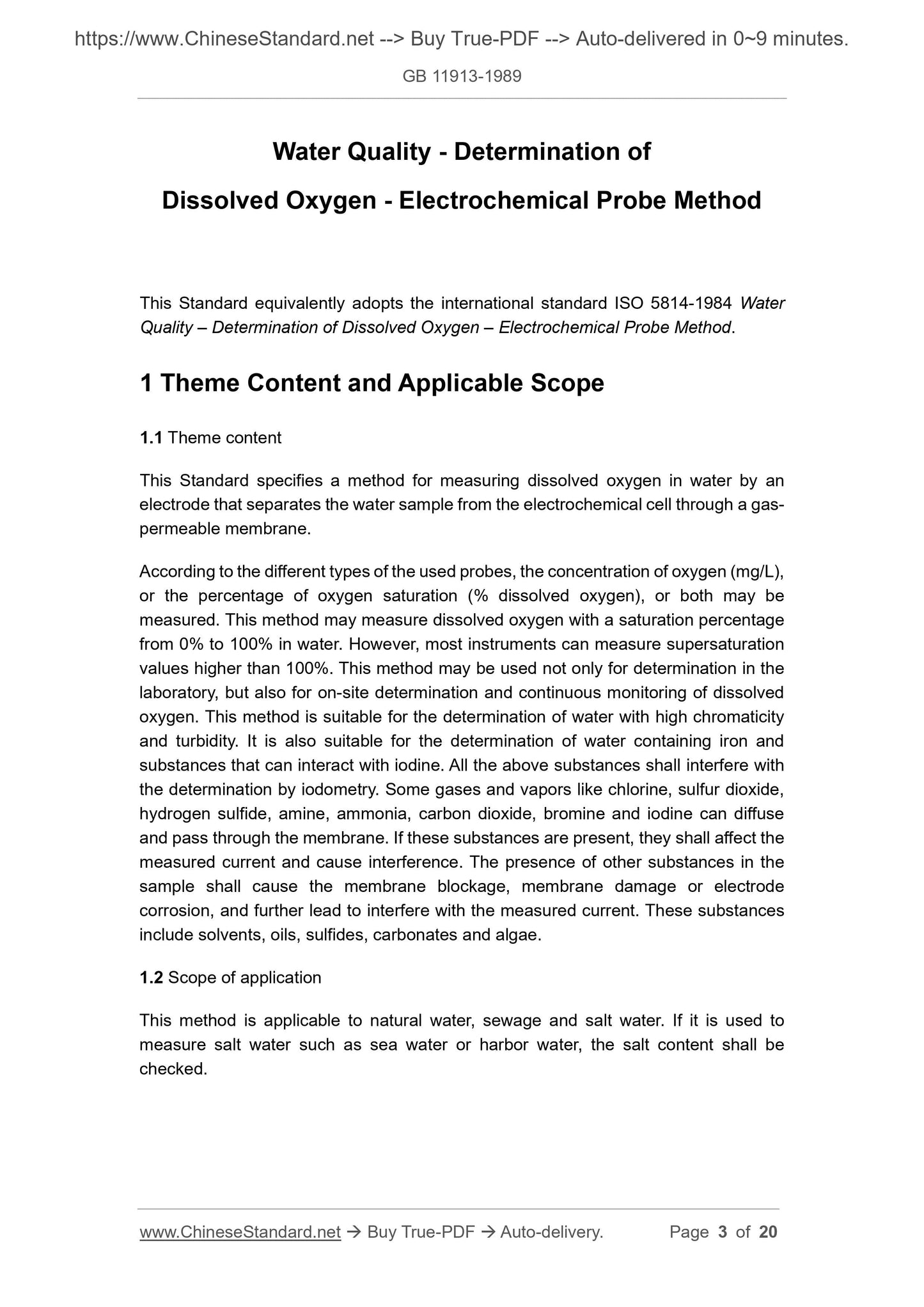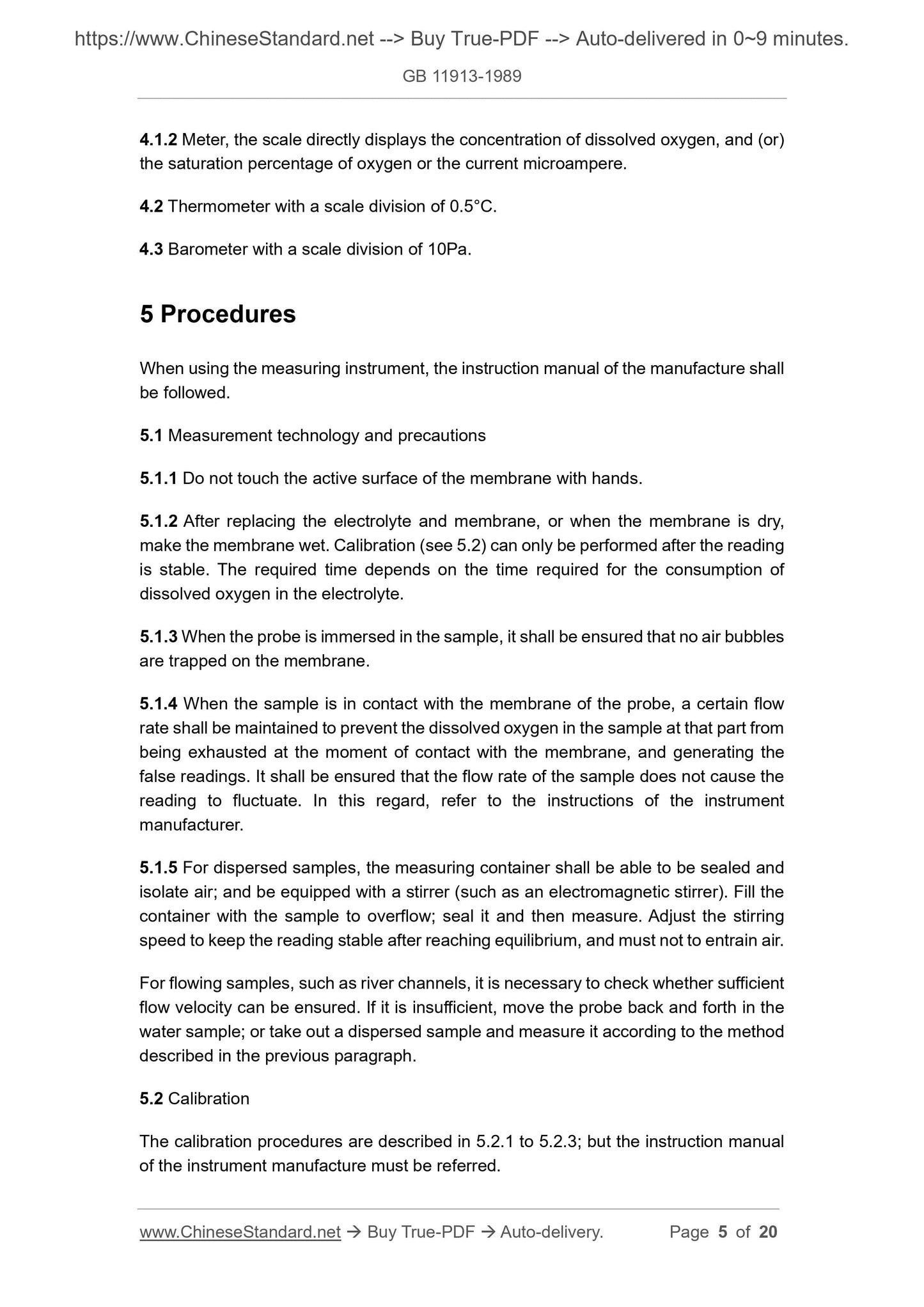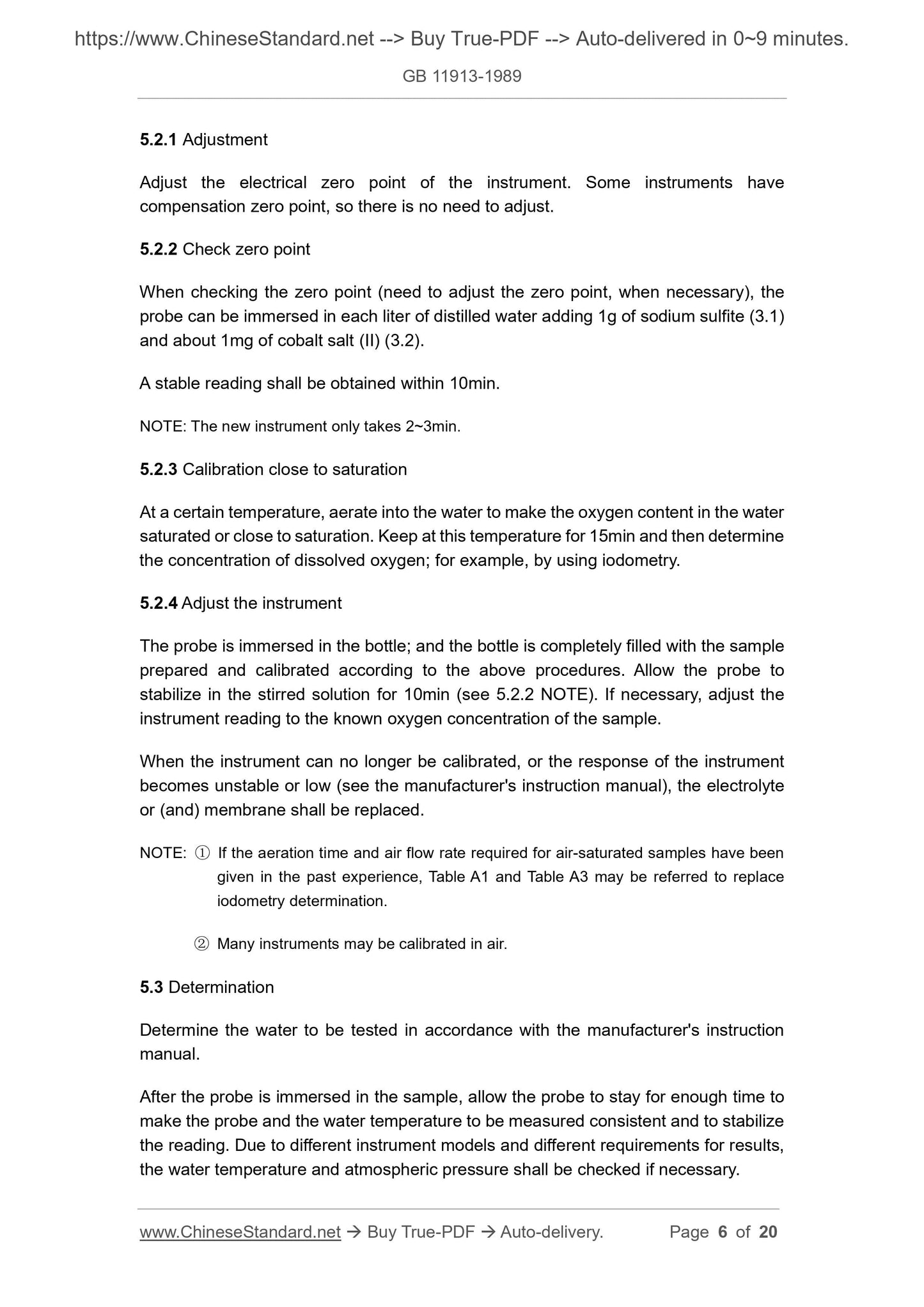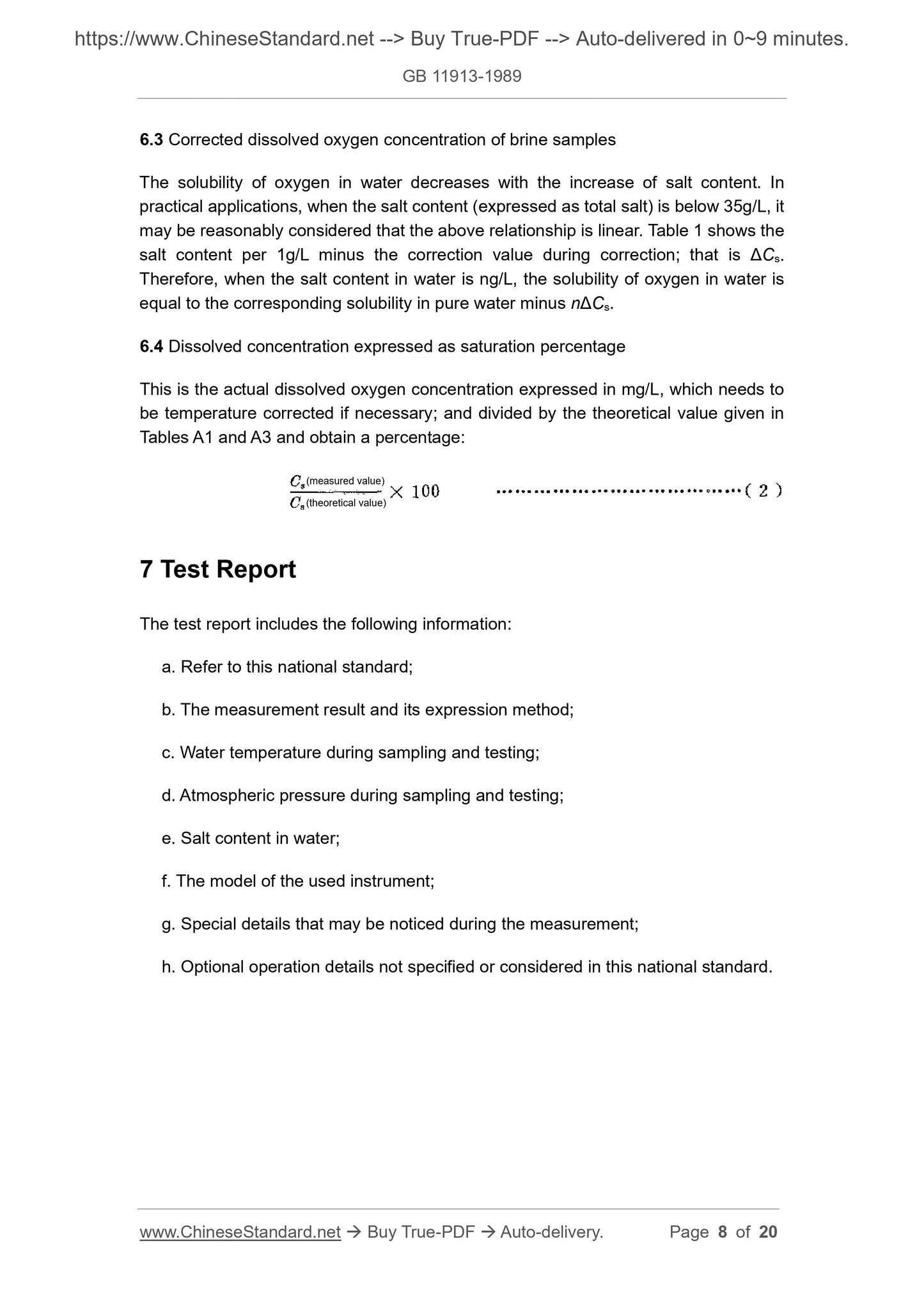1
/
of
6
www.ChineseStandard.us -- Field Test Asia Pte. Ltd.
GB/T 11913-1989 English PDF (GB/T11913-1989)
GB/T 11913-1989 English PDF (GB/T11913-1989)
Regular price
$495.00
Regular price
Sale price
$495.00
Unit price
/
per
Shipping calculated at checkout.
Couldn't load pickup availability
GB/T 11913-1989: Water quality--Determination of dissolved oxygen--Electrochemical probe method
Delivery: 9 seconds. Download (and Email) true-PDF + Invoice.Get Quotation: Click GB/T 11913-1989 (Self-service in 1-minute)
Newer / historical versions: GB/T 11913-1989
Preview True-PDF
Scope
1.1 Theme contentThis Standard specifies a method for measuring dissolved oxygen in water by an
electrode that separates the water sample from the electrochemical cell through a gas-
permeable membrane.
According to the different types of the used probes, the concentration of oxygen (mg/L),
or the percentage of oxygen saturation (% dissolved oxygen), or both may be
measured. This method may measure dissolved oxygen with a saturation percentage
from 0% to 100% in water. However, most instruments can measure supersaturation
values higher than 100%. This method may be used not only for determination in the
laboratory, but also for on-site determination and continuous monitoring of dissolved
oxygen. This method is suitable for the determination of water with high chromaticity
and turbidity. It is also suitable for the determination of water containing iron and
substances that can interact with iodine. All the above substances shall interfere with
the determination by iodometry. Some gases and vapors like chlorine, sulfur dioxide,
hydrogen sulfide, amine, ammonia, carbon dioxide, bromine and iodine can diffuse
and pass through the membrane. If these substances are present, they shall affect the
measured current and cause interference. The presence of other substances in the
sample shall cause the membrane blockage, membrane damage or electrode
corrosion, and further lead to interfere with the measured current. These substances
include solvents, oils, sulfides, carbonates and algae.
1.2 Scope of application
This method is applicable to natural water, sewage and salt water. If it is used to
measure salt water such as sea water or harbor water, the salt content shall be
checked.
Basic Data
| Standard ID | GB/T 11913-1989 (GB/T11913-1989) |
| Description (Translated English) | Water quality--Determination of dissolved oxygen--Electrochemical probe method |
| Sector / Industry | National Standard (Recommended) |
| Classification of Chinese Standard | Z16 |
| Classification of International Standard | 13.060.40 |
| Word Count Estimation | 14,143 |
| Date of Issue | 11/3/1989 |
| Date of Implementation | 7/1/1990 |
| Adopted Standard | ISO 5814-1984, IDT |
| Regulation (derived from) | Environmental Protection Ministry Bulletin 2009 No. 54 |
| Issuing agency(ies) | State Bureau of Technical Supervision |
Share
